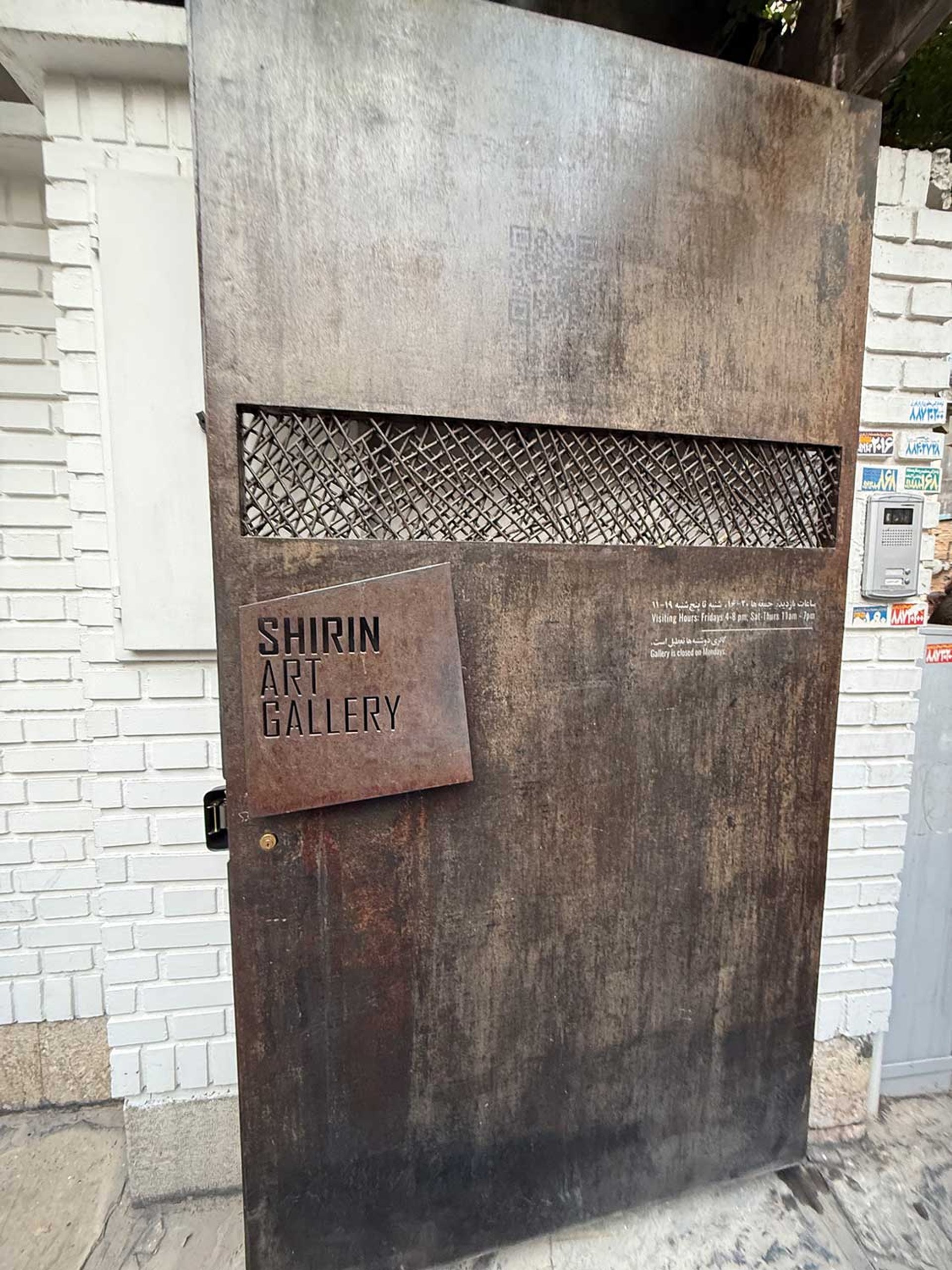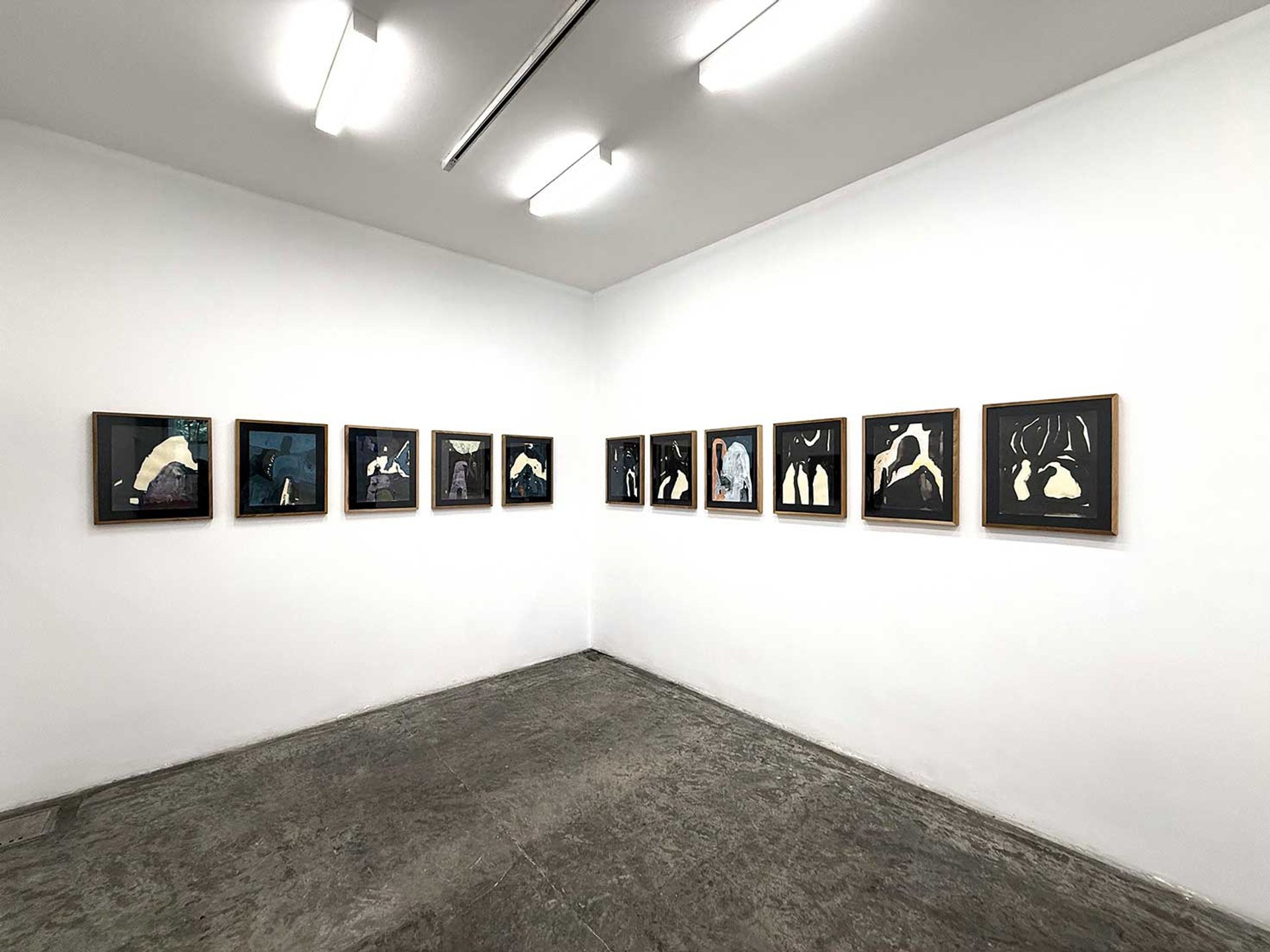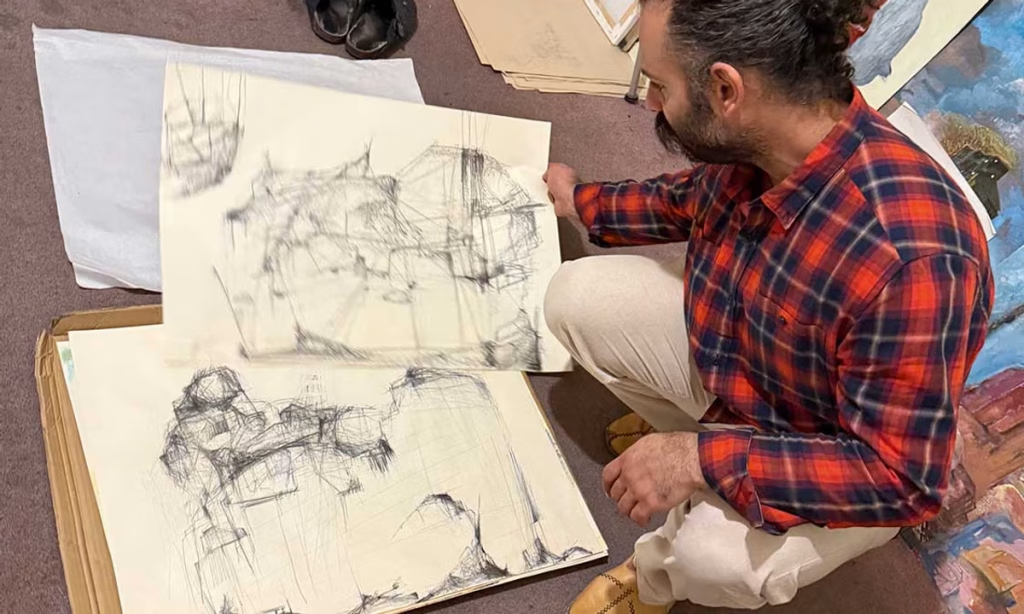Gallery hopping is a popular pastime in Tehran. Hundreds of art lovers move from one space to another in the Iranian capital to catch the latest art openings, exchange ideas late into the night and end their evenings in cafés or at parties. This summer, however, the 12-day war in June between Israel and Iran shook the city and its cultural life. The conflict and lingering fears of its recurrence have battered the country’s already crumbling economy, driving up inflation. Art sales slowed as collectors tightened their purse strings, while rising costs, nearly daily electricity outages and water shortages added new pressures.
However, on 1 August, the capital’s resilience was on full display at 8Cube gallery in northern Tehran. Expectant, a group show in collaboration with Parallel Circuit, featuring 28 emerging artists curated by one of Iran’s most recognised sculptors, Bita Fayyazi, drew around 1,500 visitors on its first night.
The opening night of Expectant at 8Cube on 1 August © Sarvy Geranpayeh
“After the 12-day war, we are still in a state of suspension and limbo,” Fayyazi tells The Art Newspaper. “If we give in to it, we will regress and lose our spirit. We must move. We are in debt to art; we must continue.” The art veteran, who has exhibited at venues including the Barbican in London, the Fondation Louis in Paris and the Museum of Modern Art in Freiburg, says the show’s theme, which explores the subjects of waiting and limbo, carries extra significance in the current climate, where people are anxiously awaiting the future.
For Aida Mofakham, 8Cube’s founder, “It felt like everything we had built in Iran was going to waste,” she says. An architecture graduate from London, Mofakham returned to her home country in 2020 and began working on transforming the eighth floor of her family’s luxury Ava Platt shopping centre into a multipurpose cultural space. After years of planning, 8Cube opened in November 2024 and was beginning to make its mark when the war broke out.
“We all asked ourselves, ‘Is it possible to come back from this?’” she recalls. But, “when we saw everyone at the opening”, Mofakham says, “it felt like a return—a celebration, a ceremony for everyone”.

Shirin Art Gallery hosted the 15th annual Montakhab-E-Nasle No exhibition in August © Sarvy Geranpayeh
Galleries are also struggling financially since the war. “Sales have plummeted across all galleries,” Mofakham says. “Times are very uncertain; people can’t plan their daily lives and make basic decisions like buying a house, marrying, even having children—let alone buying art.” The fragile market makes solo shows by young artists more risky. “It’s best to focus on group exhibitions or mini art fairs and involve other galleries, fostering unity,” she says.
Even so, Expectant exceeded expectations, with sales boosted, Mofakham says, by Fayyazi’s reputation and the more affordable price points. Mofakham is now developing programmes to attract new collectors and expand audiences. “We are adapting,” she says. “It’s like taking pain and converting it into power—that’s where hope comes from.”
Orkideh Daroodi, the founder of one of Tehran’s most popular galleries, O Gallery, echoes Mofakham’s concerns about declining sales and a precarious future. “Every month inflation doubles or triples,” she says. She notes that many collectors are increasingly moving away from buying art and turning to gold or foreign currency instead.
‘Skin of my teeth’
Daroodi, who was raised in the US, returned to Iran nearly two decades ago. She opened O Gallery in 2014 to champion emerging Iranian artists. She placed great emphasis on accessibility, staging two shows per month that attracted around 7,000 visitors. She has weathered numerous crises – most recently, Covid-19 closures and the 2022 Woman, Life, Freedom protests, during which she was the first gallery to reopen publicly and faced criticism. She has kept the gallery afloat, often by the “skin of my teeth”, but admits the latest conflict has left her somewhat pessimistic.
Still, she is adapting to stay afloat, recently transforming the gallery’s second floor into a space running programmes that explore the impact of movement on creativity. At the same time, Daroodi has been seeking opportunities abroad, entering O Gallery into the Armory Show in New York, despite the high costs and the challenges of US sanctions, which complicate even basic logistics such as shipping.
“Although art fairs are extremely expensive for us, the only solution for survival is to build stronger connections with the art market outside,” she says. “If we are not active in this field, we really will see the gallery’s doors close.”
She also worries for emerging artists, who are having to scale back their output as material costs spiral and supplies become unavailable. “You start calculating what materials and tools [are] economical to use, which closes some doors,” says Boyeh Sadatnia, a 44-year-old artist who has had three solo shows at O Gallery. At his latest exhibition in August, Palimpsest, he managed to sell two thirds of the 29 works on view; prices ranged from around 23m tomans ($250) to over 100m tomans ($1,000).

Boyeh Sadatnia’s third solo show at O Gallery in August, Palimpsest, featured pieces created after the Iran-Israel war © Sarvy Geranpayeh
Sadatnia credits the success of the show to a few factors: he was able to put up his works in exchange for the framing costs, which amounted to 128m tomans (around $1,400), and he has a London-based friend who collects his work. “This is not normal, not everyone has a friend who can support them like this,” he says. “With this high inflation, the middle class that really could buy works by artists like me has disappeared.” The wealthy buyers remain focused on established artists, he says, adding: “When war happens, artworks are one of the first things to disappear from people’s shopping baskets.”
Over the past few years, however, Sadatnia has only sold two or three pieces. He runs art classes with a friend for additional income, but rising prices have caused some students to drop out and many are struggling to afford art materials. Sadatnia and his friend have tried to help the students by buying supplies in bulk to lower costs.
Still, leaving the art world is not an option for him. “I have spent over 20 years in [the] arts and dedicated my life to it. This is the skill I know, so I have to continue in this field no matter what,” he says.
Art perseveres
Fayyazi points out that the downturn is part of a wider trend facing the visual arts globally. The difference, she says, is that young artists in Europe often have greater access to support funds—a safety net that artists in Iran lack. But, she says, “the real artists” will persevere.
“Art is a way of life. It sparks rebellion in us,” Fayyazi says. “Artists are the most fortunate people on earth, because no matter the situation, they do what they want—and say what they want.”
